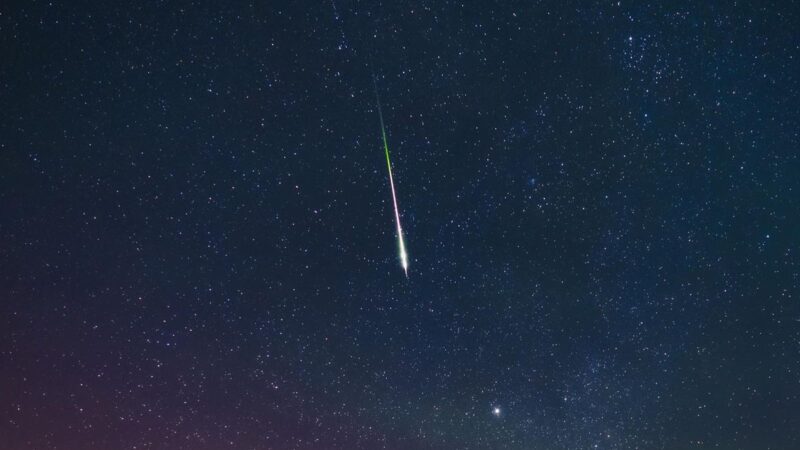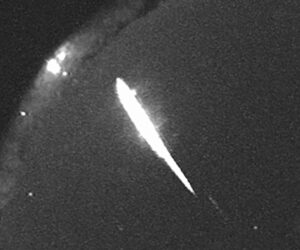A captivating photograph capturing the brilliance of a meteor streaking across a star-filled night sky. There are red and green auroras on the horizon.This stunning display of a meteor shower creates a mesmerizing arc of light against the dark celestial canvas, highlighting the awe-inspiring beauty of space. Ideal for themes related to astronomy, natural wonders, space exploration, and the mysteries of the universe. Photo taken in Alxa, Nei Mongol,China
getty
The Orionid meteor shower officially begins on Thursday, Oct. 2, 2025, launching a few weeks of “shooting stars.” Running through Nov. 22, the Orionids are set to peak under moonless skies overnight on Oct. 21-22— a night that could see bonus views of a rare naked eye comet.
What Are The Orionids?
The Orionids are an annual meteor shower that occurs every autumn when Earth passes through a stream of debris left behind by Halley’s Comet. Tiny particles — some no bigger than grains of sand — collide with our atmosphere at speeds of 41 miles per second, according to the American Meteor Society, to produce meteors. Orionid meteors are known for their brightness and for their speed, according to NASA.
Orion constellation and Sirius above forest in winter sky
getty
Where To See The Orionids
Although “shooting stars” during meteor showers can be seen anywhere in the night sky, they do originate from a specific place — hence their names. The Orionids’ radiant point — the spot in the sky from which the meteors appear to emerge — lies in the constellation Orion, near the red supergiant star Betelgeuse.
Orionid Meteor Shower And Halley’s Comet
The cause of the Orionid meteor shower is Halley’s Comet, the most famous comet of all. Although the comet itself won’t return until 2061 — having last visited in 1986 — its dust trail lights up Earth’s skies twice a year, producing both the Eta Aquariids in May and the Orionids in October.
Orionid Meteor Shower And Comet Lemmon
As well as the prospect of “shooting stars” in a dark, moonless night sky, there’s also a chance of seeing a bright comet. Comet Lemmon (C/2025 A6), discovered earlier this year, makes its closest approach on Oct. 20-21, coinciding with both the Orionid peak and the dark new moon. If the comet brightens as astronomers hope, it could become visible to the naked eye, creating a very rare opportunity for skywatchers.
October’s Night Sky
The Orionids headline a busy month for stargazers. It begins with the full Harvest Moon on Oct. 6-7, the peak of the Draconid meteor shower on Oct. 8 and close encounters between the moon and the Pleiades on Oct. 9–10. A slim crescent moon will pair with Venus before sunrise on Oct. 19, while the moon will mingle with Mercury and Mars on Oct. 23.
Wishing you clear skies and wide eyes.









